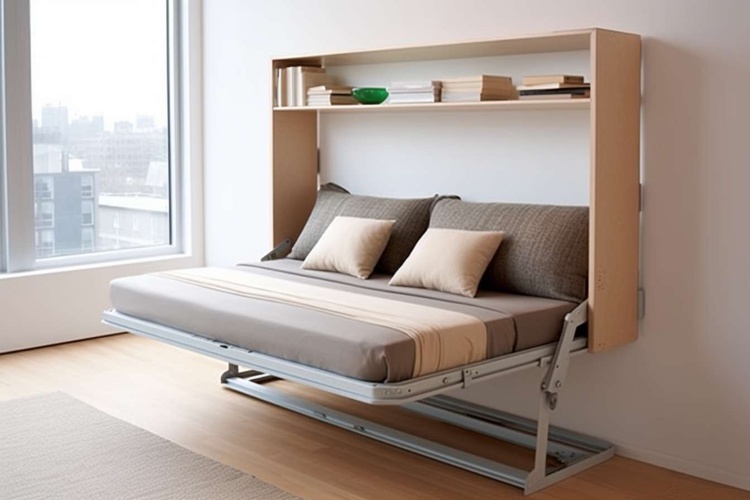Affordable Senior Apartments
Finding suitable housing becomes increasingly important as we age, especially when balancing comfort, accessibility, and affordability. Affordable senior apartments offer a practical solution for older adults seeking independent living within their budget constraints. These housing options are specifically designed to meet the unique needs of seniors while remaining financially accessible, providing a comfortable environment where they can maintain their independence and quality of life.

Understanding Affordable Senior Housing Options
Affordable senior apartments are residential units specifically designed for older adults, typically those aged 55 or 62 and above. These communities offer reduced rent through various subsidy programs, including those administered by the Department of Housing and Urban Development (HUD), Low-Income Housing Tax Credits (LIHTC), and other state or local initiatives. The application process often involves income verification, as many programs are designed to assist seniors with limited financial resources. Most affordable senior housing communities maintain waiting lists due to high demand, making early application essential for those considering this option.
Benefits of Independent Living for Seniors
Independent living for seniors provides numerous advantages beyond just affordable housing. These communities foster social connection through communal spaces and organized activities, helping combat isolation that often affects older adults living alone. Many communities feature senior-specific amenities such as fitness centers with low-impact exercise equipment, community gardens, and activity rooms. Transportation services are commonly available to help residents maintain their independence when driving is no longer an option. Perhaps most importantly, these communities create an environment where seniors can maintain their autonomy while having support structures in place when needed.
Key Features of Senior-Friendly Housing
Senior-friendly housing incorporates design elements that address the changing physical needs of aging adults. Accessibility features such as wider doorways, grab bars in bathrooms, and no-step entries allow for easier navigation and reduced fall risk. Many communities offer enhanced security measures, including controlled building access, emergency response systems, and regular staff presence to provide peace of mind. Common areas are designed to encourage socialization, featuring comfortable seating arrangements, good lighting, and acoustic considerations. Additionally, maintenance services typically handle repairs, lawn care, and snow removal, eliminating these physical burdens from residents’ responsibilities.
Finding One-Bedroom Senior Housing Options
One-bedroom apartments represent a popular choice among seniors looking to downsize while maintaining privacy and comfort. These units typically range from 550 to 750 square feet, offering enough space for essential furnishings without the maintenance demands of larger homes. Floor plans generally include a separate bedroom, living area, bathroom with accessibility features, and a kitchenette or full kitchen depending on the community. When searching for one-bedroom senior housing, consider factors such as layout, natural light, storage options, and proximity to community amenities. Most communities offer virtual or in-person tours to help prospective residents evaluate these aspects before making a decision.
Qualifying for Affordable Senior Apartments
Eligibility for affordable senior apartments varies depending on the specific program and community. Age requirements typically start at either 55 or 62 years, with income limits usually set at 30-80% of the area median income (AMI). Priority is often given to applicants with the greatest financial need, though some communities maintain a mix of income levels. The application process generally involves income verification, background checks, and sometimes interviews. Required documentation typically includes proof of income (Social Security statements, pension information, tax returns), identification, and medical information if applying for units with specialized services. Many applicants find working with a senior housing specialist or social worker helpful when navigating this process.
Comparing Affordable Senior Housing Options
Several affordable senior housing programs exist nationwide, each with different eligibility requirements and benefits. Understanding these options can help seniors make informed decisions about their housing.
| Housing Program | Eligibility Requirements | Average Rent Cost | Key Features |
|---|---|---|---|
| Section 202 Supportive Housing | Age 62+, very low income | 30% of adjusted income | Service coordination, accessible units |
| Low-Income Housing Tax Credit | Varies by property, typically 55+ | Based on income tiers | Mixed-income communities, newer construction |
| Public Housing for Seniors | Age 62+, low income | 30% of adjusted income | Operated by local housing authorities, varied locations |
| Section 8 Housing Choice Voucher | Low income, preference for elderly | 30-40% of income | Can be used in private market rentals |
| Naturally Occurring Affordable Housing | Age-restricted, moderate income | $800-$1,200 for one-bedroom | Market-rate but affordable, fewer subsidies |
Prices, rates, or cost estimates mentioned in this article are based on the latest available information but may change over time. Independent research is advised before making financial decisions.
Making the Transition to Senior Housing
Transitioning to senior housing involves both practical and emotional considerations. Begin by realistically assessing current and future needs, considering factors such as location, amenities, and level of independence desired. Downsizing possessions is often necessary when moving to a smaller space; starting this process early can reduce stress. Many seniors find it helpful to visit multiple communities before making a decision, observing not just the physical space but also the social atmosphere and staff interactions. Financial planning for the move should include understanding all costs—not just rent but also potential fees, utilities, and service charges. Finally, maintaining connections to one’s former neighborhood while establishing new relationships in the senior community can help ease the emotional aspects of the transition.
Finding affordable housing that supports independence and quality of life remains a priority for many older adults. With proper research and planning, senior apartments can provide not just affordable shelter but a supportive community that enhances the retirement years.




